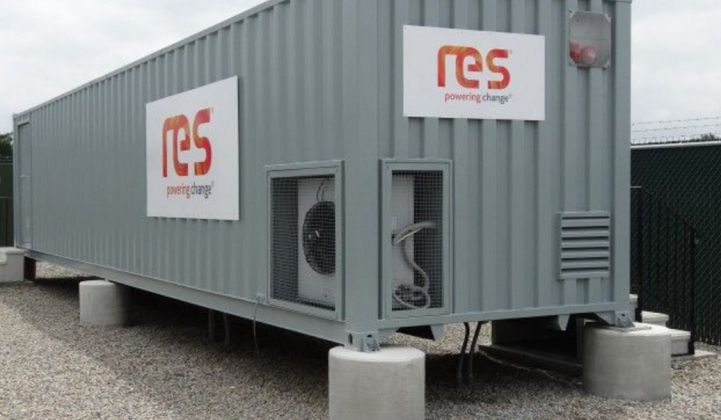The U.K.’s National Grid has surprised the energy storage community after initiating a major frequency response tender -- and then awarding a 20-megawatt project outside it.
Energy storage players due to bid for up to 200 megawatts of enhanced frequency response capacity were startled to see National Grid hand out a major project to Renewable Energy Systems (RES) ahead of the tender outcome.
However, Phil Brogan, head of communications and community relations for RES in the U.K. and Ireland, told GTM the project had been in the works for a long time before the tender was issued.
“RES initially proposed this service to National Grid in 2014, based on our experience of delivering multiple similar projects in North America,” he said.
“We undertook a significant amount of detailed technical analysis on the benefit of such a service to the electricity system and worked closely with National Grid in testing and proving National Grid's own analysis of the impact of very fast frequency response services.”
Brogan also said the contract is not for enhanced frequency response. Rather, it will be used to monitor the impact of adjusting technical parameters of a grid battery during operation.
“We have been working jointly over the past 18 months on analysis of battery operation and frequency response and this contract is the culmination of that relationship,” he said.
RES claimed the project was Great Britain’s “first sub-second frequency response service using battery storage” in a press announcement last month.
“This is a new service which will aid National Grid in performing its system balancing role, which increasingly requires innovation and the use of new technologies,” said the company.
The RES lithium-ion battery storage system is expected to be operational in 18 months. RES is still scoping the details of the project and has yet to secure planning consent, Brogan said.
However, work so far on the RES project influenced National Grid’s decision to tender much more capacity this summer.
“The technical analysis undertaken by RES, which led to this contract separately, contributed to National Grid's decision to seek 10 times more of sub-second frequency response through the enhanced frequency response invitation to tender,” said Brogan.
In April, National Grid issued an invitation to tender for around 200 megawatts of enhanced frequency response capacity. The tender is due to launch on July 11 and close on July 15, with results being published in August.
RES is one of the suppliers to have prequalified for the tender following a request last September that drew responses from more than 70 suppliers offering a combined capacity of more than 7 gigawatts.
“RES is considering submitting a proposal to National Grid's 200-megawatt enhanced frequency response tender later this summer,” Brogan confirmed. “If we do submit a tender, it will compete on a level playing field with all other tenders.”
National Grid’s enhanced frequency response tender is in response to a loss of inertia across the U.K. grid as coal-fired plants are retired.
The grid operator is looking to buy fast-reaction capacity in blocks of between 1 megawatt and 50 megawatts per vendor, for an initial contract period of four years starting between fall 2017 and spring 2018.
“We recognize that four years is not very long when investing in new assets,” said National Grid in a frequently asked questions (FAQ) document issued in March. “However, National Grid is a regulated business and therefore sanctioning contracts longer than two years, because of the funding arrangement together with the forecasted market conditions, involves us taking on an unacceptable level of risk.”
Four years “is seen as a good balance between revenue certainty and risk mitigation,” it said.
Nevertheless, the network operator has sought to reassure bidders that the need for enhanced frequency response is not going to go away.
“We are seeing a requirement for this type of service increasing over the next few years, therefore we intend to run regular tender events on an enduring basis,” the company wrote on its website.



